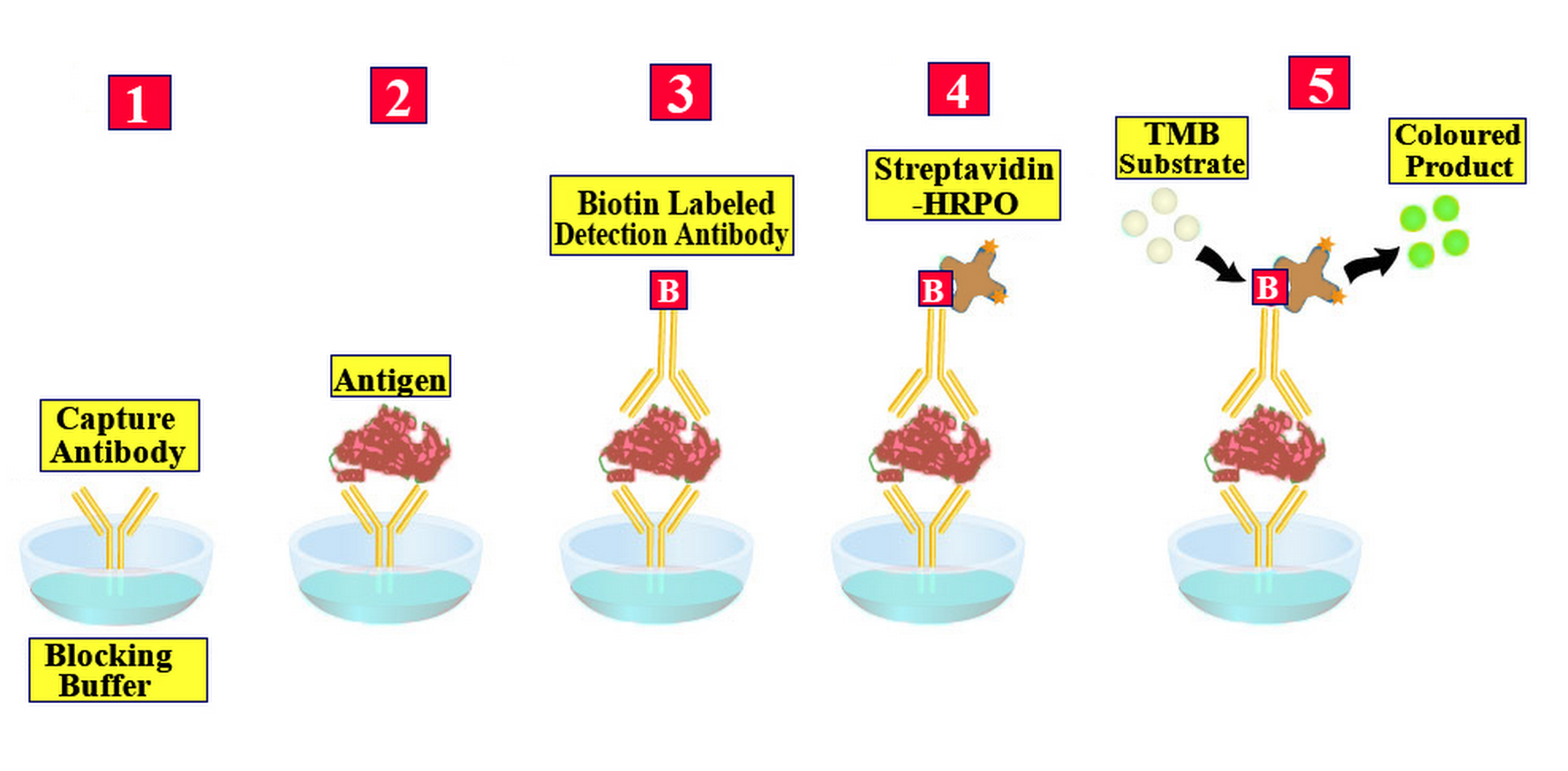
Which of the following types of ELISA contain the following steps? Antigen binding, Blocking, Primary antibody. An enzyme-linked antibody, substrate, colorimetric reading (Represented in the diagram).

(A)Direct ELISA
(B)Indirect ELISA
(C)Competitive ELISA
(D)Sandwich ELISA

Answer
471.3k+ views
Hint: It can be seen that the sample is present in between and antibodies are present on both sides of the samples. This type of ELISA is very efficient in sample antigen detection.
Complete answer:
A Sandwich ELISA measures the concentration of antigen between two layers of the antibody. The vessel is first coated with a primary antibody, then with the sample in which antigen is to be detected and then coated with a detecting antibody. After that enzyme-linked secondary antibody is added which binds to the detecting antibody. Now substrate is added which is converted to detectable form with the help of an enzyme.
Additional Information: In sandwich ELISA, it quantifies antigens between two layers of antibodies. The antigen which is to be measured must contain at least two antigenic epitopes capable of binding to antibody because a minimum of two antibodies functions in the sandwich model. Monoclonal or polyclonal antibodies can be either used as the capture and detection antibodies in the Sandwich ELISA model. Monoclonal antibodies are used to detect a single epitope which allows fine detection and quantification of small differences in antigen. A polyclonal antibody is often used as the capture. The advantage of Sandwich ELISA is that the sample which is to be used does not have to be purified before analysis, and the assay can be very sensitive.
So, the correct answer is ‘Sandwich ELISA’
Note: ELISA ( Enzyme-Linked Immunosorbent Assay ) is used to detect the antigen concentration in an unknown sample. It is used for the diagnosis of HIV infection, pregnancy tests, rotavirus, and many more diseases.
Complete answer:
A Sandwich ELISA measures the concentration of antigen between two layers of the antibody. The vessel is first coated with a primary antibody, then with the sample in which antigen is to be detected and then coated with a detecting antibody. After that enzyme-linked secondary antibody is added which binds to the detecting antibody. Now substrate is added which is converted to detectable form with the help of an enzyme.
Additional Information: In sandwich ELISA, it quantifies antigens between two layers of antibodies. The antigen which is to be measured must contain at least two antigenic epitopes capable of binding to antibody because a minimum of two antibodies functions in the sandwich model. Monoclonal or polyclonal antibodies can be either used as the capture and detection antibodies in the Sandwich ELISA model. Monoclonal antibodies are used to detect a single epitope which allows fine detection and quantification of small differences in antigen. A polyclonal antibody is often used as the capture. The advantage of Sandwich ELISA is that the sample which is to be used does not have to be purified before analysis, and the assay can be very sensitive.
So, the correct answer is ‘Sandwich ELISA’
Note: ELISA ( Enzyme-Linked Immunosorbent Assay ) is used to detect the antigen concentration in an unknown sample. It is used for the diagnosis of HIV infection, pregnancy tests, rotavirus, and many more diseases.
Recently Updated Pages
Master Class 12 English: Engaging Questions & Answers for Success

Master Class 12 Chemistry: Engaging Questions & Answers for Success

Master Class 12 Biology: Engaging Questions & Answers for Success

Class 12 Question and Answer - Your Ultimate Solutions Guide

Master Class 12 Economics: Engaging Questions & Answers for Success

Master Class 12 Maths: Engaging Questions & Answers for Success

Trending doubts
Which are the Top 10 Largest Countries of the World?

Differentiate between homogeneous and heterogeneous class 12 chemistry CBSE

Draw a labelled sketch of the human eye class 12 physics CBSE

What is a transformer Explain the principle construction class 12 physics CBSE

Explain sex determination in humans with the help of class 12 biology CBSE

How much time does it take to bleed after eating p class 12 biology CBSE




